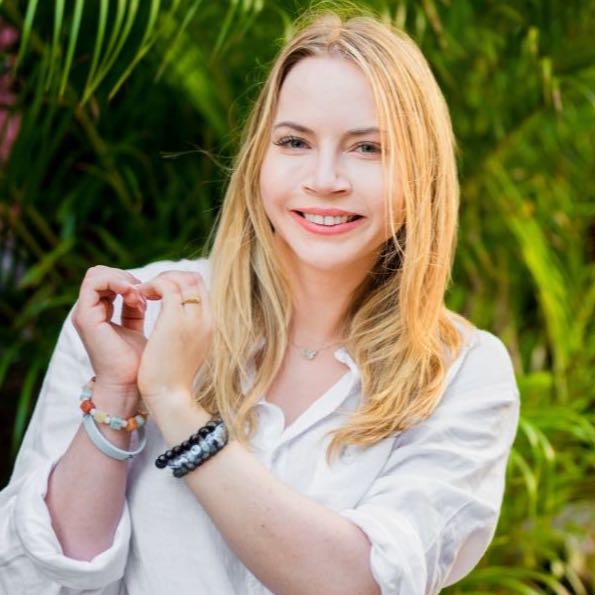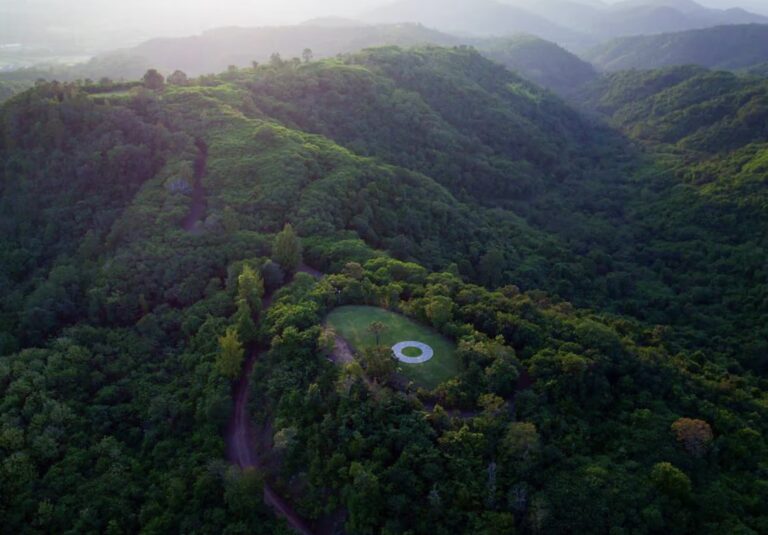
Francesco Arena’s God sculpture Debuts in Thailand’s Art Forest
- Khao Yai Art Forest
- Abigail MacFadden
- February 6, 2025
- 5 min read
In the verdant expanse of Thailand’s Khao Yai Art Forest, Italian artist Francesco Arena has created a striking dialogue between human intervention and natural space. His work, “GOD” composed of two monumental stones found on the grounds, stands as one of the inaugural installations in this ambitious project spearheaded by art patrons Chearavanont and Pansera.
Arena’s installation joins works by an international roster of artists including Fujiko Nakaya, Ubatsat, and Elmgreen & Dragset, each responding to the forest’s distinctive character. The project’s emphasis on healing, positivity, and environmental harmony resonates deeply with Arena’s artistic practice, which has long explored the relationship between human presences and natural spaces.
In our conversation Arena reflects on his experience working within this unique setting, where the traditional concept of a sculpture park has been reimagined as an organic, evolving environment.
Abbey: Your commissioned work is deeply tied to the natural landscape of Khao Yai Art Forest. What was your first impression of the land and how did it shape your artistic approach?
Francesco: When I am invited to think about a work for a specific place it is essential to build a relationship with the space for which the work will be projected. First, I visit the place without being so specific so that the sensations remaining from the gaze are in a certain sense primordial, this was also the case for Khao Yai.
Abbey: Marisa Chearavanont, the patron for the forest, emphasized healing, love and care as guiding principles for the Art Forest. How did these themes influence the concept or materials of your piece?
Francesco: Marisa asked me to visit the site without adding any additional information so that my first visit would not be influenced by directions or any suggestions. I immediately thought that the place required of my a work that in its monumentality would be lost in the surrounding nature while still remaining itself.
Abbey: Site-specific art often requires a deep engagement with the environment. Were there any unexpected challenges or discoveries you encountered while working with natural elements like rocks, mud, and water?
Francesco: I knew right away God was the right work for Khao Yai. The production took two years with five visits to Thailand to follow each stage of the work, made entirely in Thailand. We faced many challenges, from finding the right stones to use, to transporting these heavy stones to the engraving site, and subsequent transport to Khao Yai. It is not easy to make two boulders of forty tons each fit on top of each other without using jointing pins. It takes great precision, which is not at all easy when working with such large dimensions. We documented all the stages of the work and are now completing a film chronicling the time and effort that went into making God.
Abbey: Your work will be in constant dialogue with nature changing with the weather, seasons and time. How does this impermanence factor into your artistic vision?
Francesco: God now lives in the forest and experiences the time of the forest - the constand repetition of sunrise and sunset. This letting everything slip by is a fundamental part of the work that stays there for those who go and encounter it.
Abbey: The Khao Yai Art Forest is also a reforestation project, reclaiming land once cleared for monoculture farming. How does your piece reflect or interact with this idea of renewal and transformation?
Francesco: The work continually renews itself in its stillness, renews itself before the eyes of the beholder and in the minds of those who think about its encounter. Renewal and transformation are as much a part of the work as they are a part of nature reclaiming spaces that for a time were taken from her.
Abbey: Were there any cultural or spiritual influences from Thailand that you incorporated into your work, or did you find inspiration from local traditions during your time at the site?
Francesco: I had never thought about making a God of that size before I went to Thailand. The encounter with the giant Buddhas made me think about how being physically overpowered by a representation of an idea of the sacred was an important element of communication. Size can relate to an idea of transcendence that looks beyond humanity and time.
Abbey: This project is meant to bridge gaps between Thai and international artists, between art and nature, between urban and rural experiences. How does your work contribute to this dialogue?
Francesco: A work of art is always a piece of encounter and dialogue. God is also that. I think Marisa’s project followed by Stefano Rabolli Pansera for Khao Yai and Bangkok Kunsthalle through the involvement of artists coming from different backgrounds is a key opportunity for Thailand and the artists who live there. I encountered a magnificent country full of ideas and energy, so different from our somewhat tired Europe.
Abbey: The forest has a unique way of altering human perception through sounds, light and movement. Did you design your piece to engage visitors’ senses in a particular way?
Francesco: God is constantly changing throughout the day with the lighting illuminating it differently, sometimes directly and sometimes filtering through the tree foliage. The sound of the falling Tek leaves caressing the work is beautiful. All of these elements make the uniqueness of the work and its being in that place and not any other.
Abbey: Now that your work is installed in the Khao Yai Art Forest, what do you hope visitors take away from it? How do you envision its role in their journey through this space?
Francesco: I hope that meeting God will give a moment of beauty, reflection and awareness to the visitors of the Khao Yai Art Forest.
Link to Profiles
Visit the Khao Yai Art Forest
More on Francesco Arena’s work
Read More
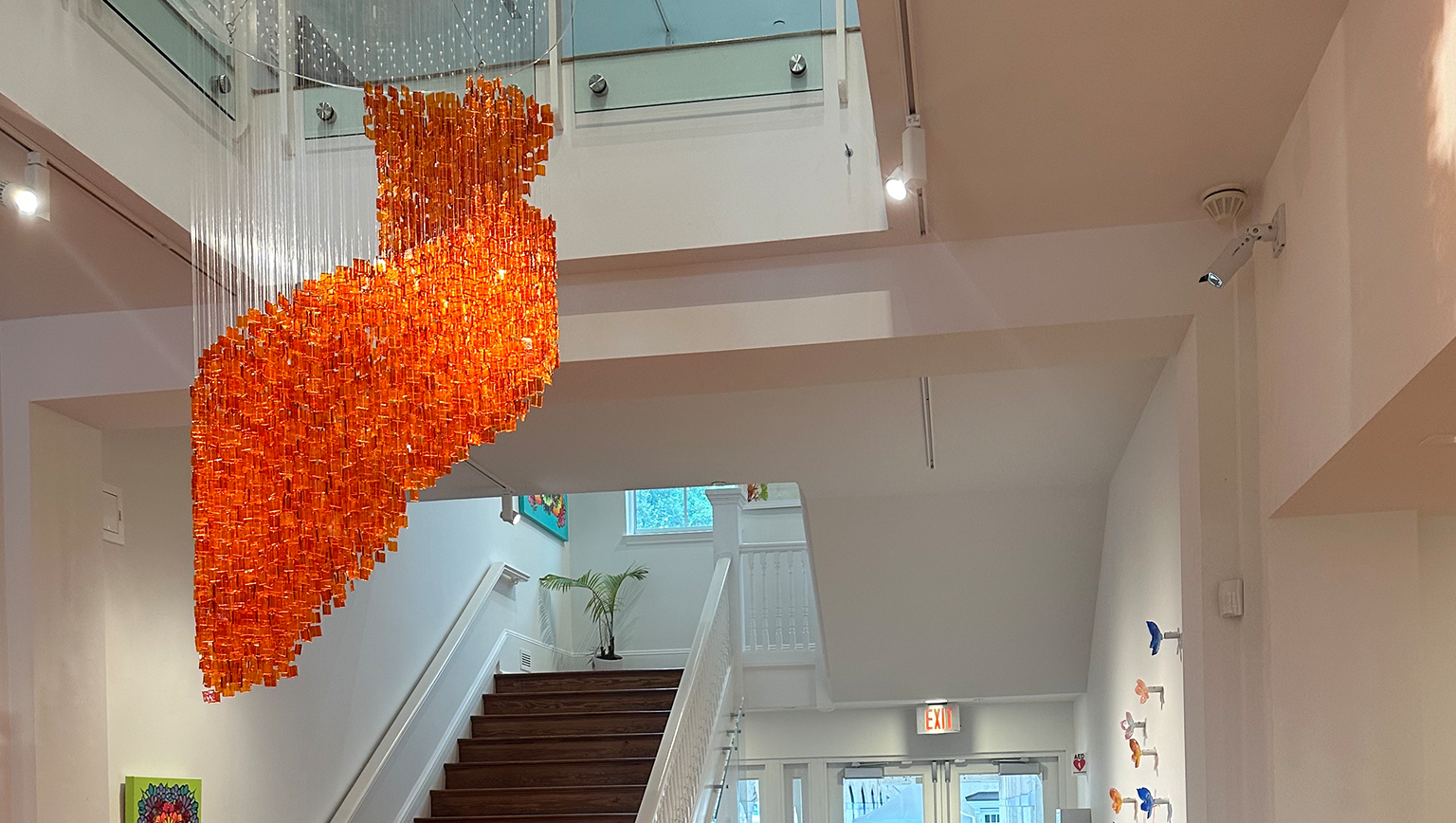
Fired Up: Why Hot Glass is the Coolest Exhibit in Delray
Chiara Padejka • February 5, 2025 •
5min read

From Portugal to the Big Apple: Lotty Carrington’s Journey to Find her Voice
Sasha Bernier • February 5, 2025 •
5min read
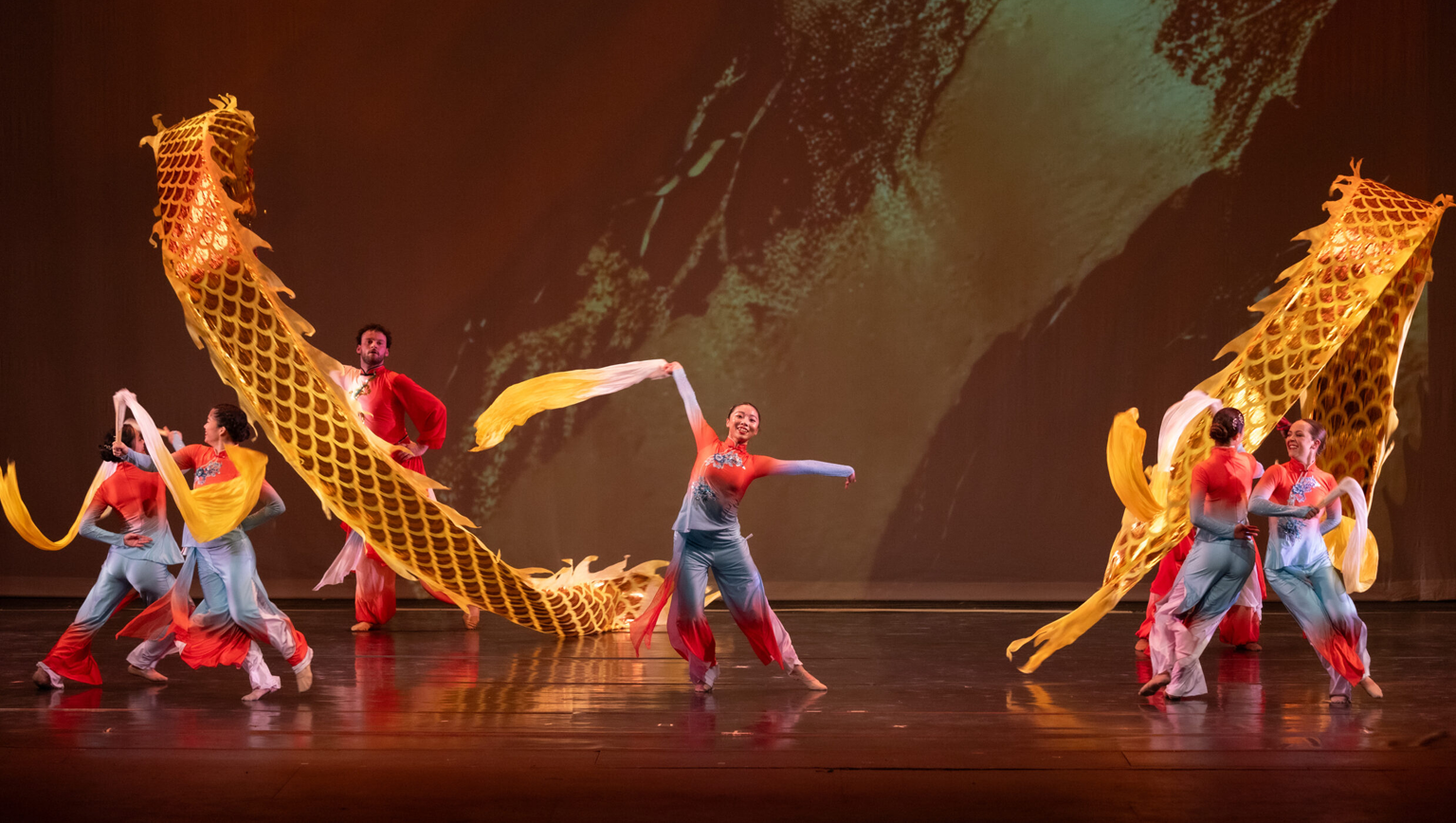
Nai-Ni Chen Dance Company’s Lunar New Year of the Snake
Dominique Aronson • February 3, 2025 •
4min read
Read More

Fired Up: Why Hot Glass is the Coolest Exhibit in Delray
Chiara Padejka • February 5, 2025 •
5min read

From Portugal to the Big Apple: Lotty Carrington’s Journey to Find her Voice
Sasha Bernier • February 5, 2025 •
5min read

Nai-Ni Chen Dance Company’s Lunar New Year of the Snake
Dominique Aronson • February 3, 2025 •
4min read

Singing in the Rain : 070 Shake Petrichor Tour
Chiara Padejka • February 3, 2025 •
5min read
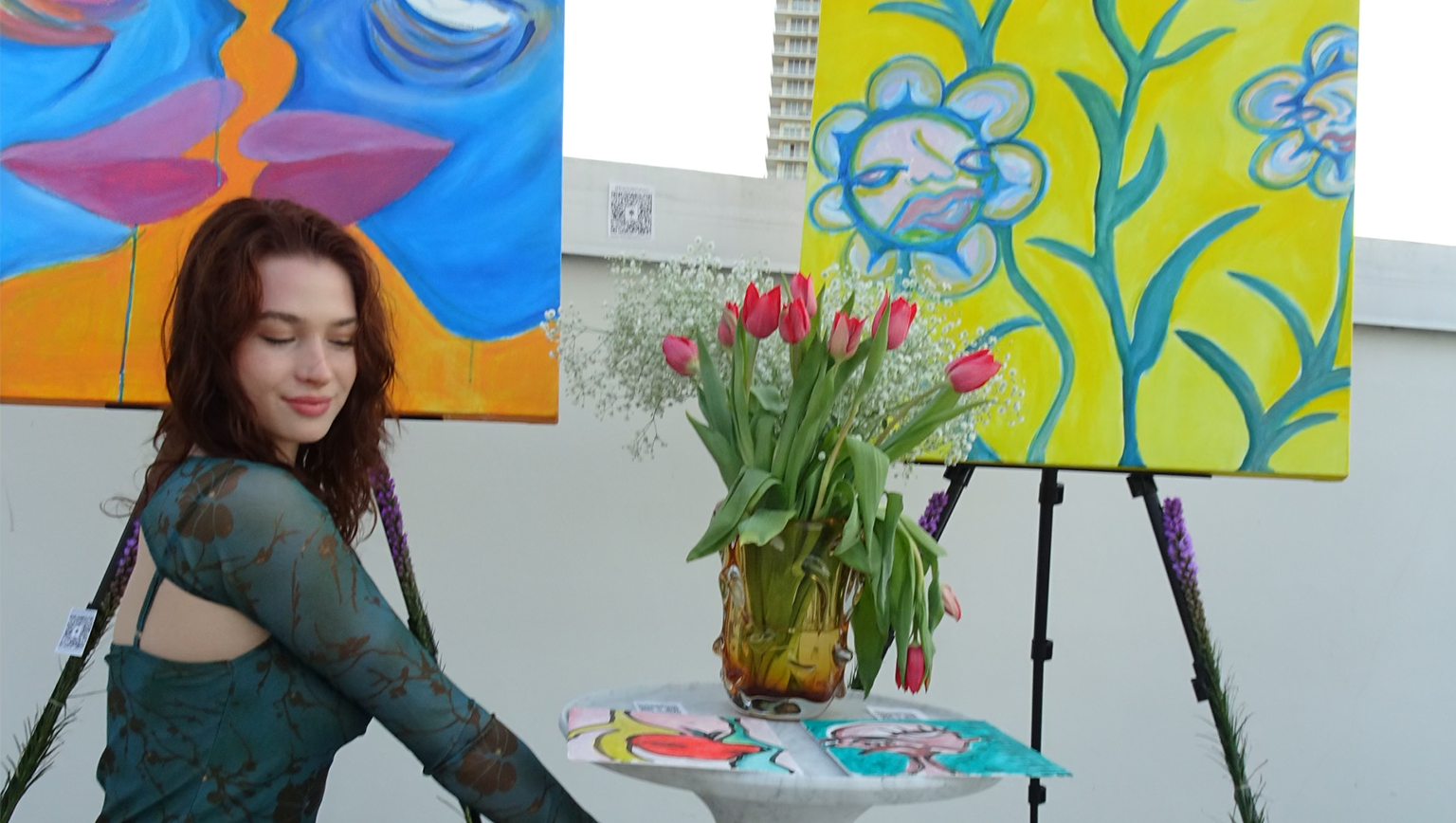
Francie Cohen: From OCD to Art Basel – How This New School Artist’s Journey Inspired Divinity Magazine for Women and Non-Binary Voices
Tessa Almond • January 31, 2025 •
5min read

Made in L.A.: Rising from the Ashes the Hammer Museum’s Biennial Moves Forward
Abigail MacFadden • January 29, 2025 •
5min read
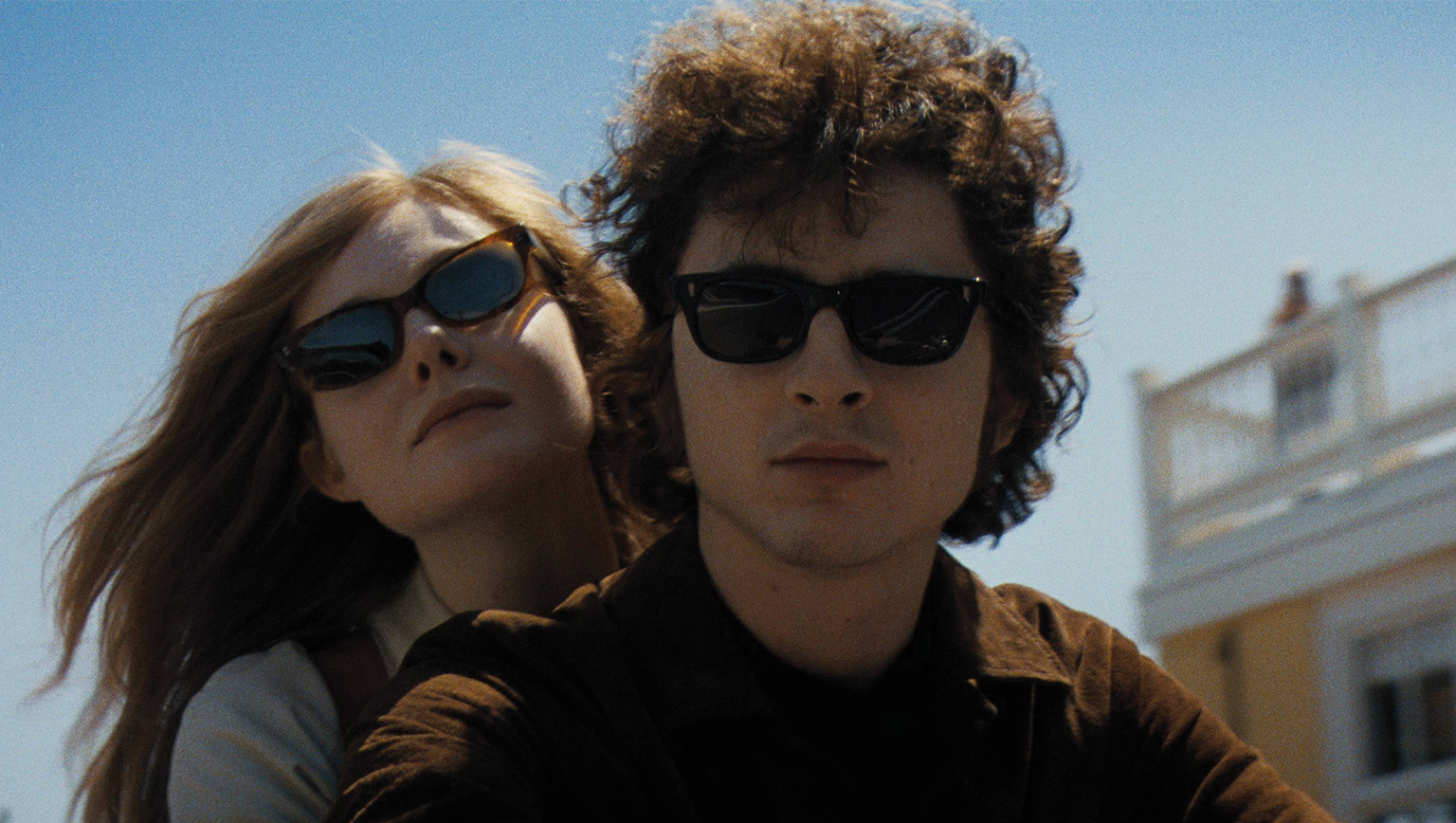
Movie Review: A Complete Unknown
Abigail MacFadden • January 21, 2025 •
4min read

“Serendipitous: A New Group Making Noise in Bushwick”
Abigail MacFadden • January 17, 2025 •
4min read
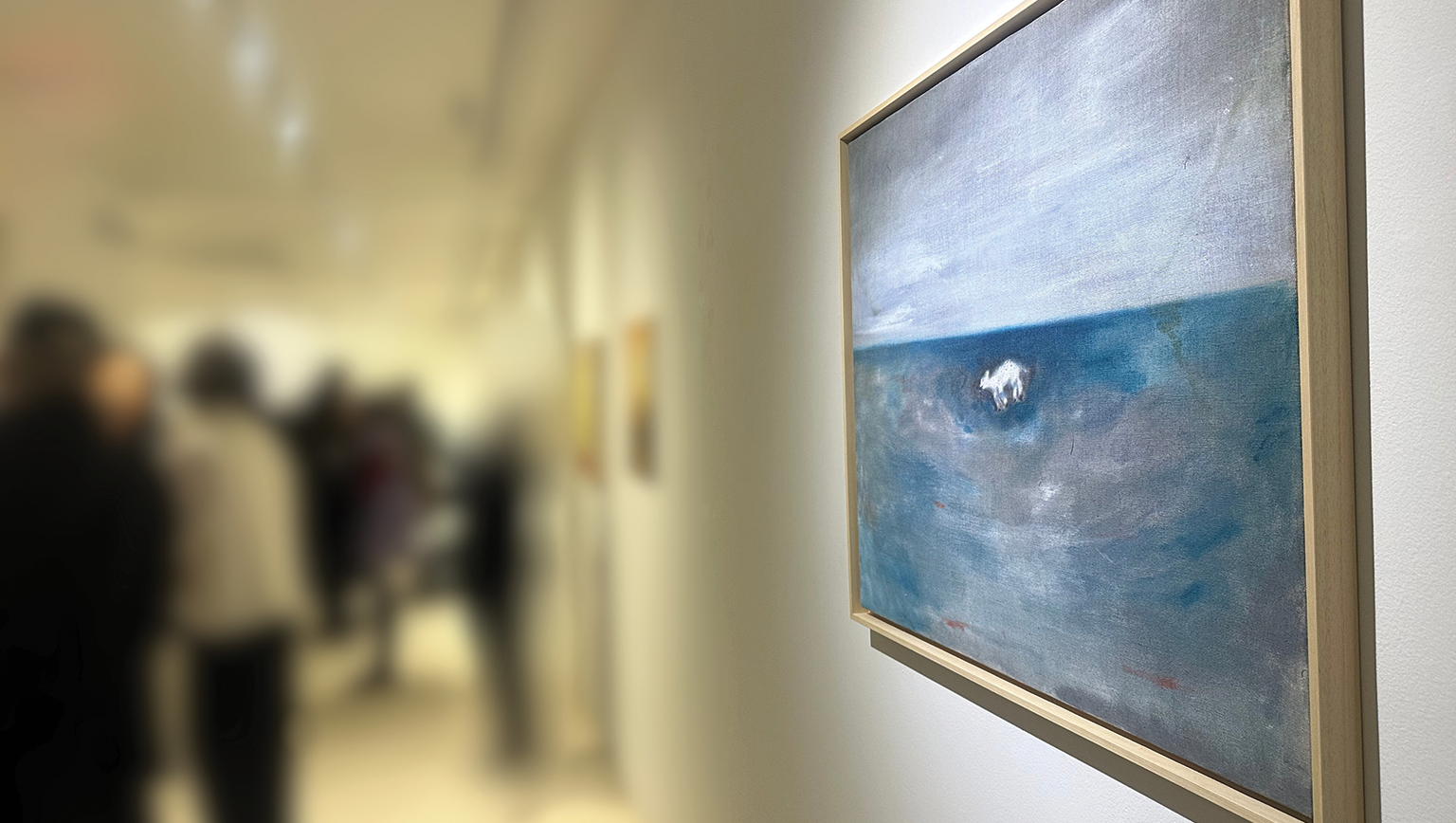
Sins and Sacrifice: Emma Katherine Hepburn Ferrer's Journey Through Sacrifice and Redemption
Abigail MacFadden • January 16, 2025 •
5min read

Uncle Waffles: Amapiano's Global Ambassador Lights Up Cape Town
Sasha Bernier • January 15, 2025 •
3min read
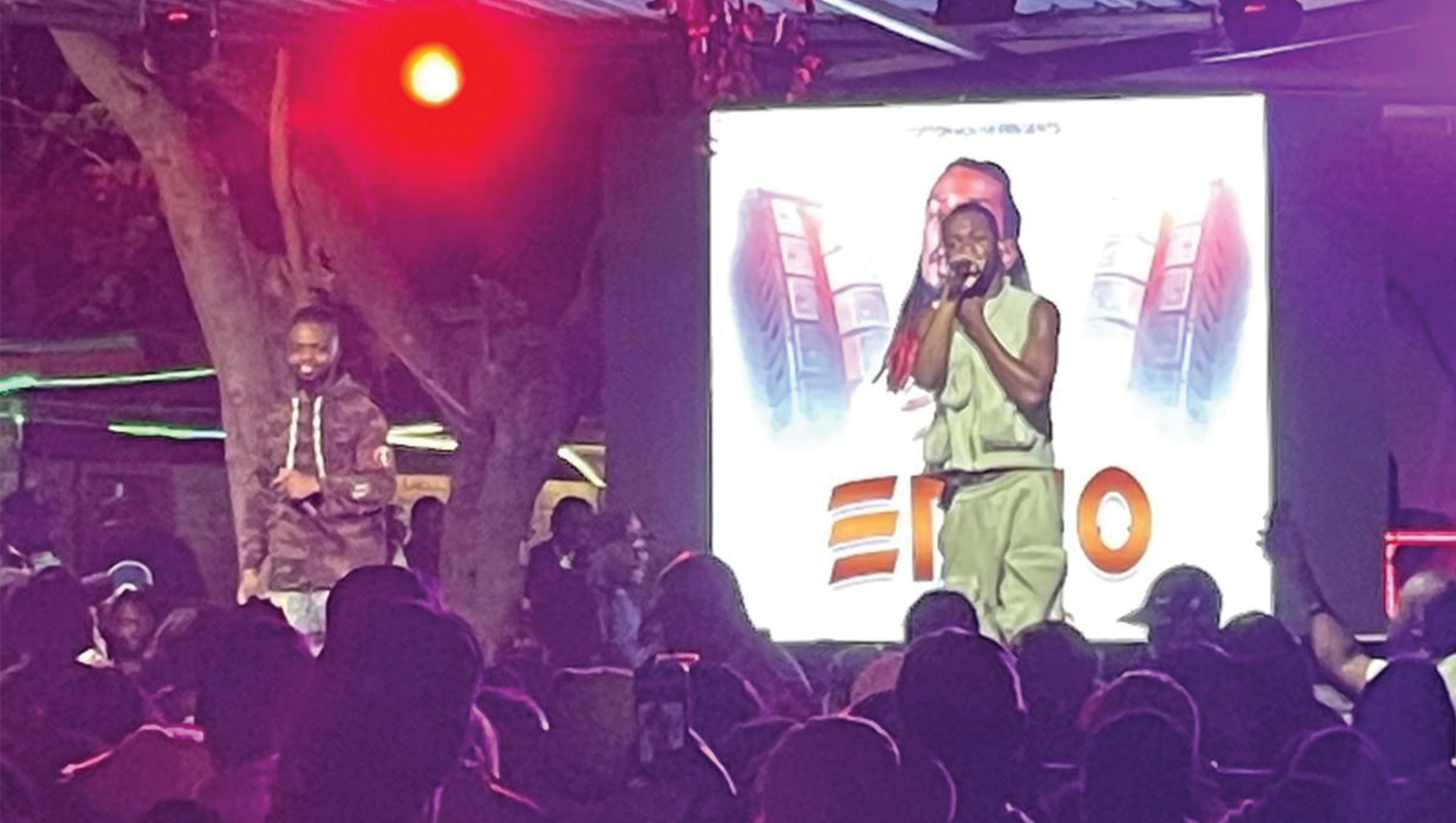
Enzo Ishall: How Zimbabwe's Dancehall King Transformed Jamaican Music into Zimhall | Live Show Review
Sasha Bernier • January 6, 2025 •
3min read

Lauren Whitfield: Texas Poet Combines Yoga, Writing, and Healing Through Innovative Poetry Workshops
Abigail MacFadden • January 2, 2025 •
4min read

Don't Be Mad: Miller's Art Basel Journey from Houston to Miami Beach
Abigail MacFadden • December 30, 2024 •
4min read
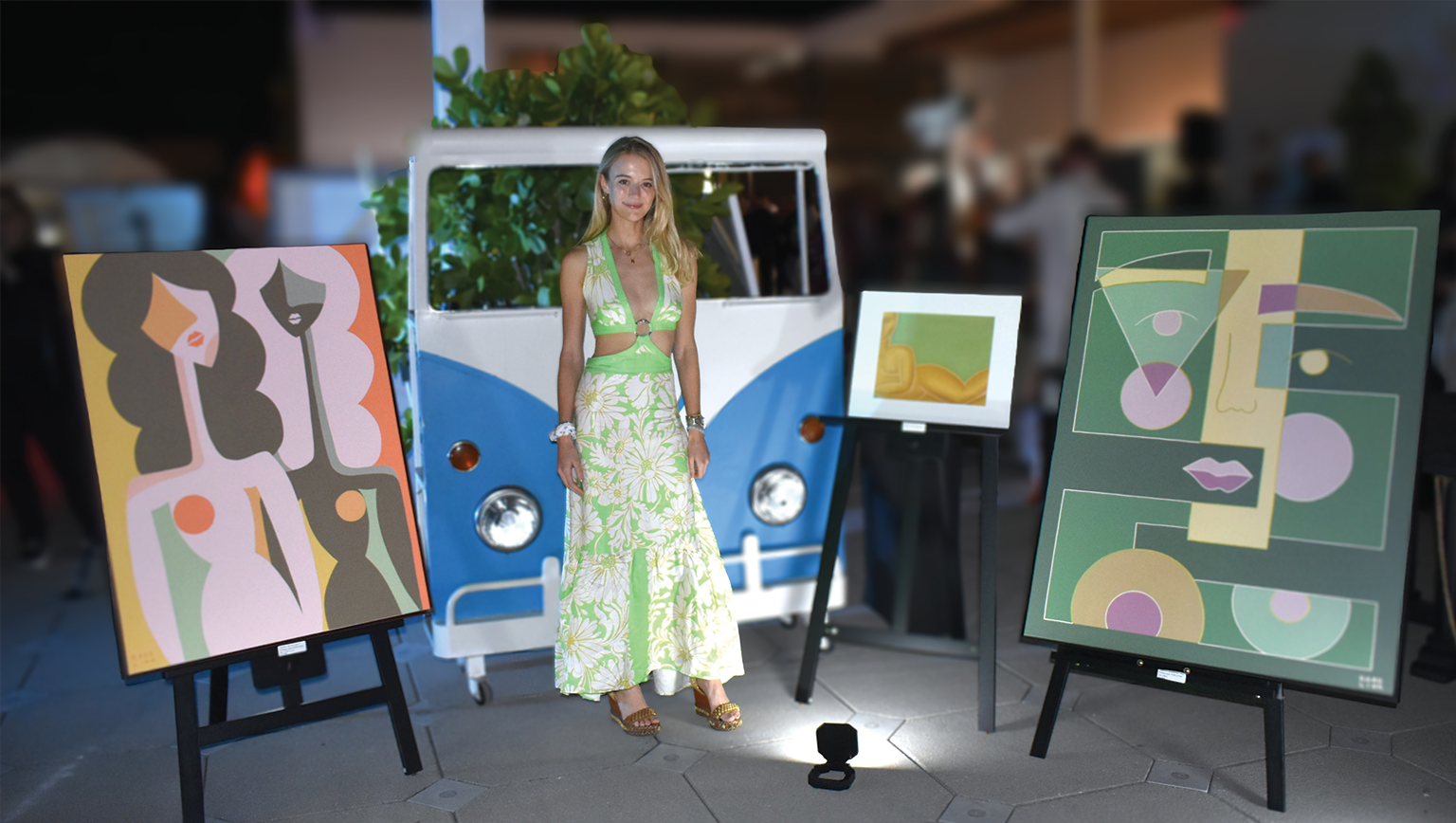
From St. Barth to Art Basel: Inside Karolina Karlsson's Muted Gemini Series and Work Wives
Abigail MacFadden • December 27, 2024 •
4min read

When Eden Gets an AR Upgrade: Oriana Pirela for Creativo
Chiara Padejka • December 24, 2024 •
6min read
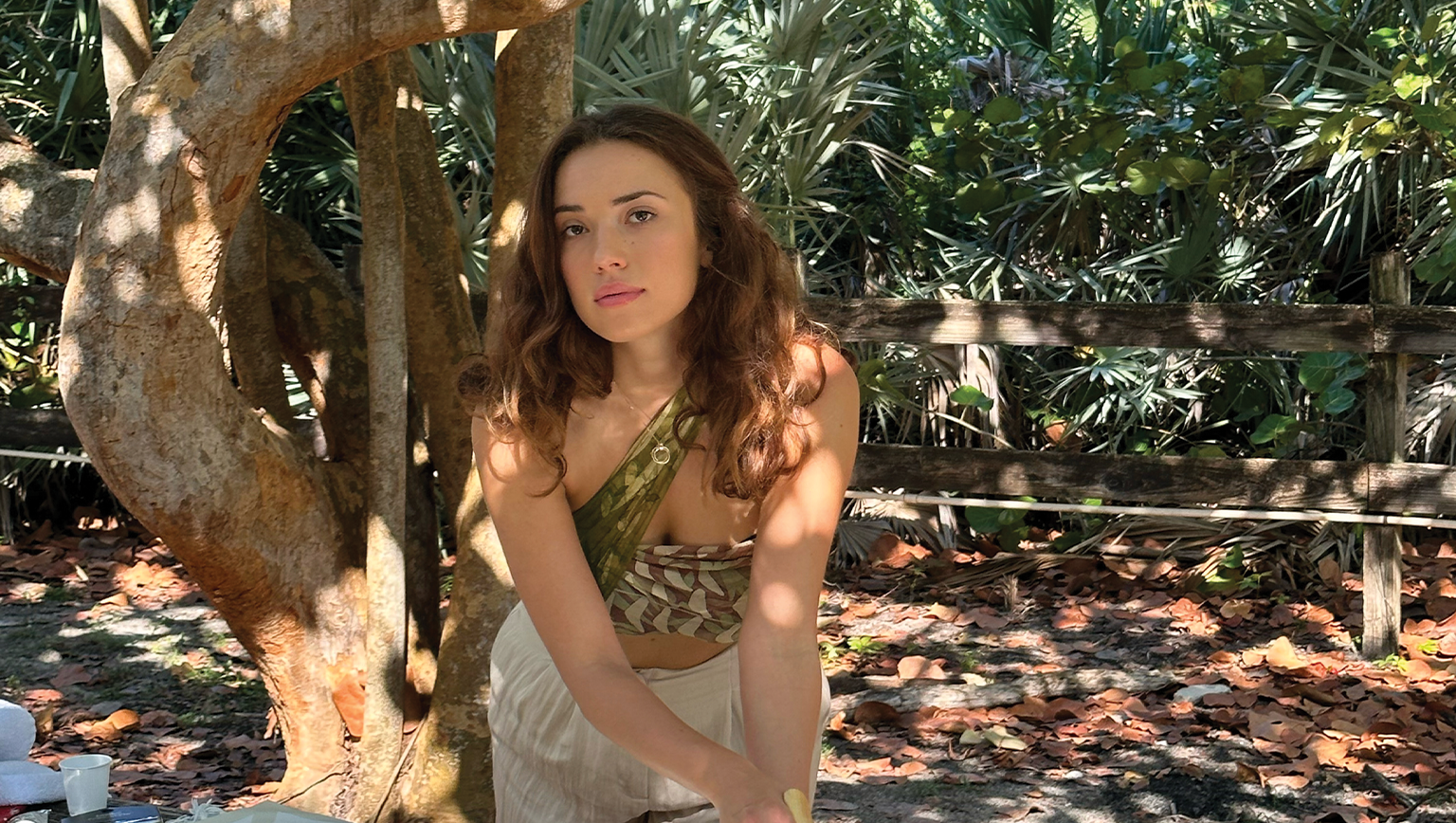
Creativo's Garden of Eden: Anastasia Butacova in Full Bloom
Chiara Padejka • December 20, 2024 •
5min read

Adam and Eve: The Origin Story of Creativo
Sasha Bernier • December 4, 2024 •
5min read

Fruit Ninja IRL: Luis Gonzalez Carves Out a Fruitful Endeavor
Chiara Padejka • November 26, 2024 •
5min read

Forbidden Fruit Couture: Dressing the Garden of Eden at Art Basel
Abigail MacFadden • November 21, 2024 •
3min read

Bloom: An Expression of Womanly Resilience
Tessa Almond • November 13, 2024 •
5min read

The Art of Giving Shines at Gabrielle’s Angel Foundation’s 26th Angel Ball
Mariele Marki • November 1, 2024 •
4min read
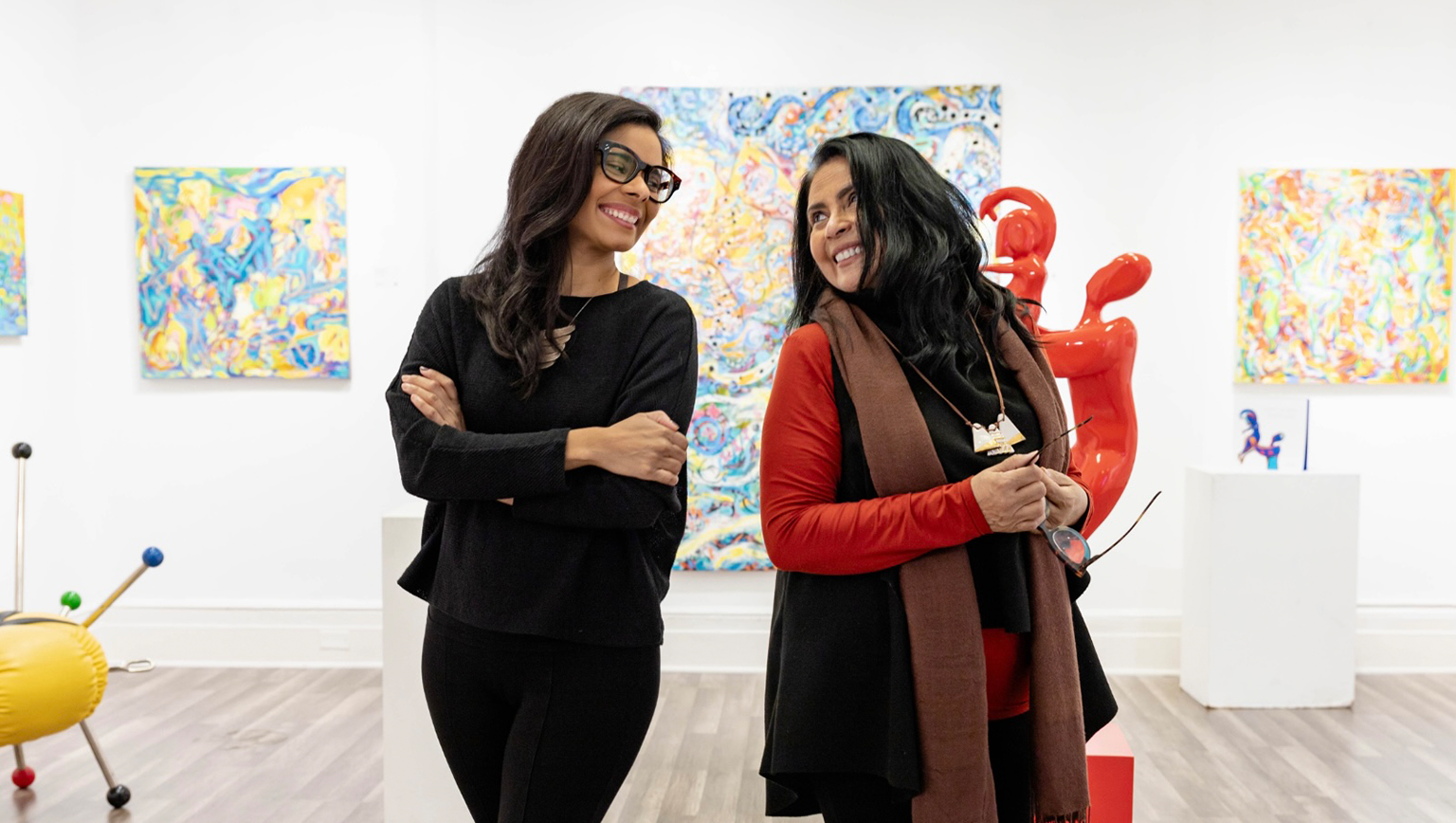
Innovation Through Collaboration: The Saphira Ventura Gallery Story
Abigail MacFadden • October 31, 2024 •
4min read
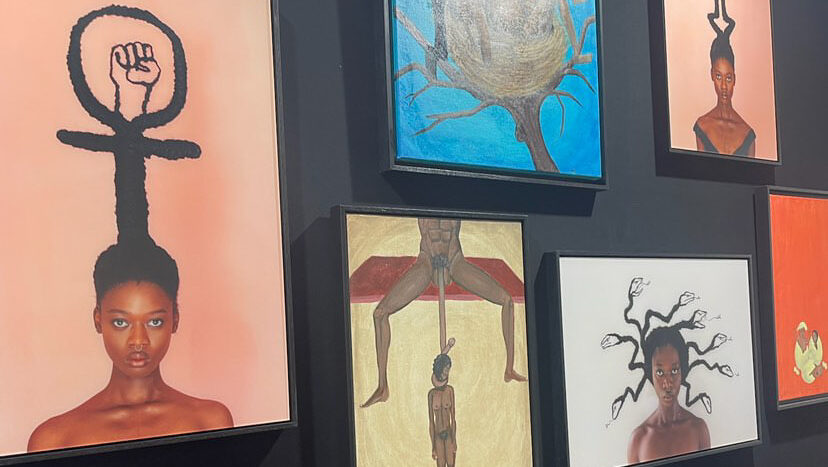
Africa's Art Market: Emancipation, Innovation, and Global Impact
Lara Sleiman • October 26, 2024 •
4min read

Woven Paintings and Human Migration: Clement Denis Exhibition at Chelsea's Nicolas Auvray Gallery
Abigail MacFadden • October 24, 2024 •
4min read
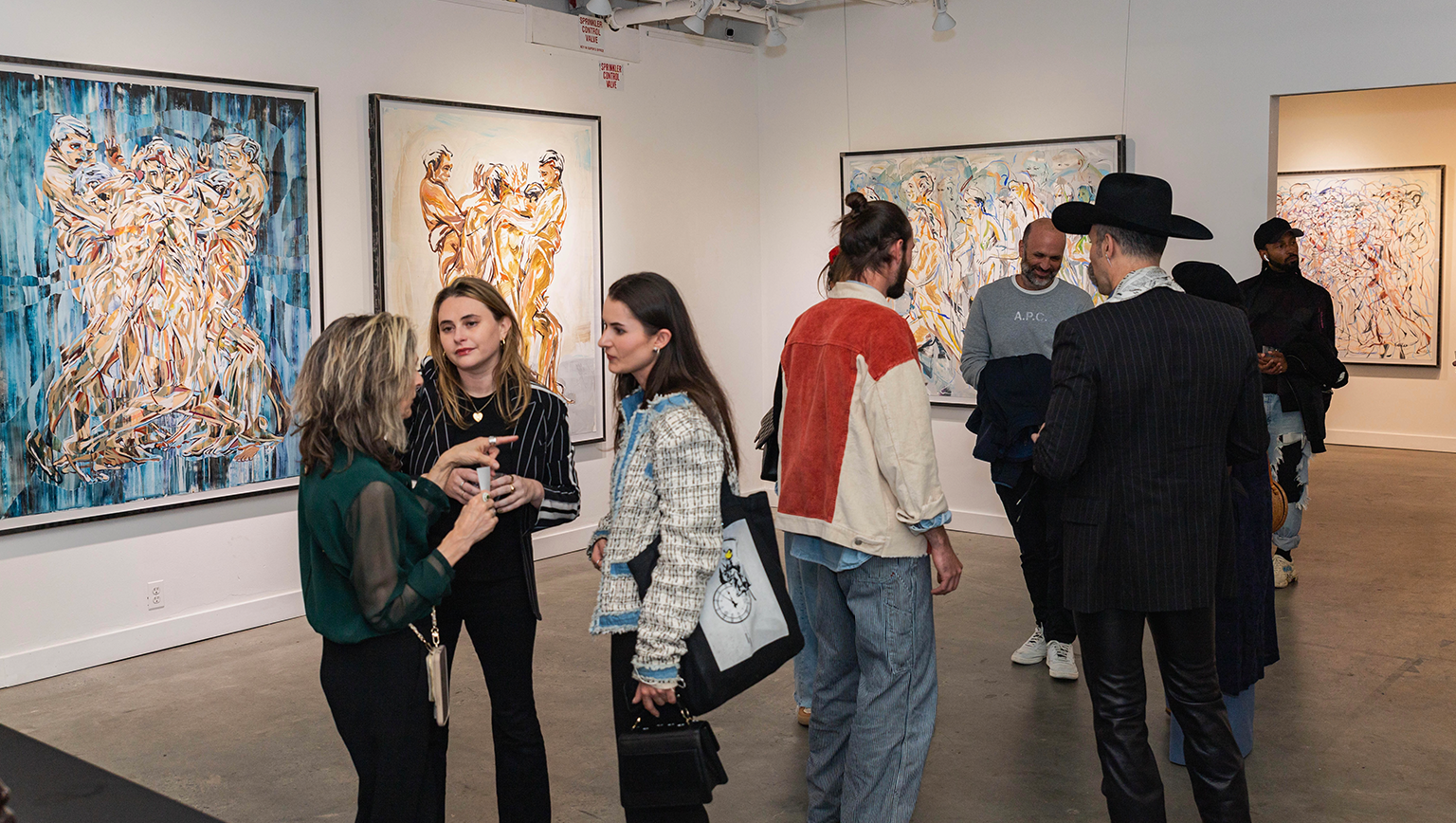
Textile, Texture, and Transformation: Innovative Voices in Contemporary Art
Abigail MacFadden • October 22, 2024 •
5min read
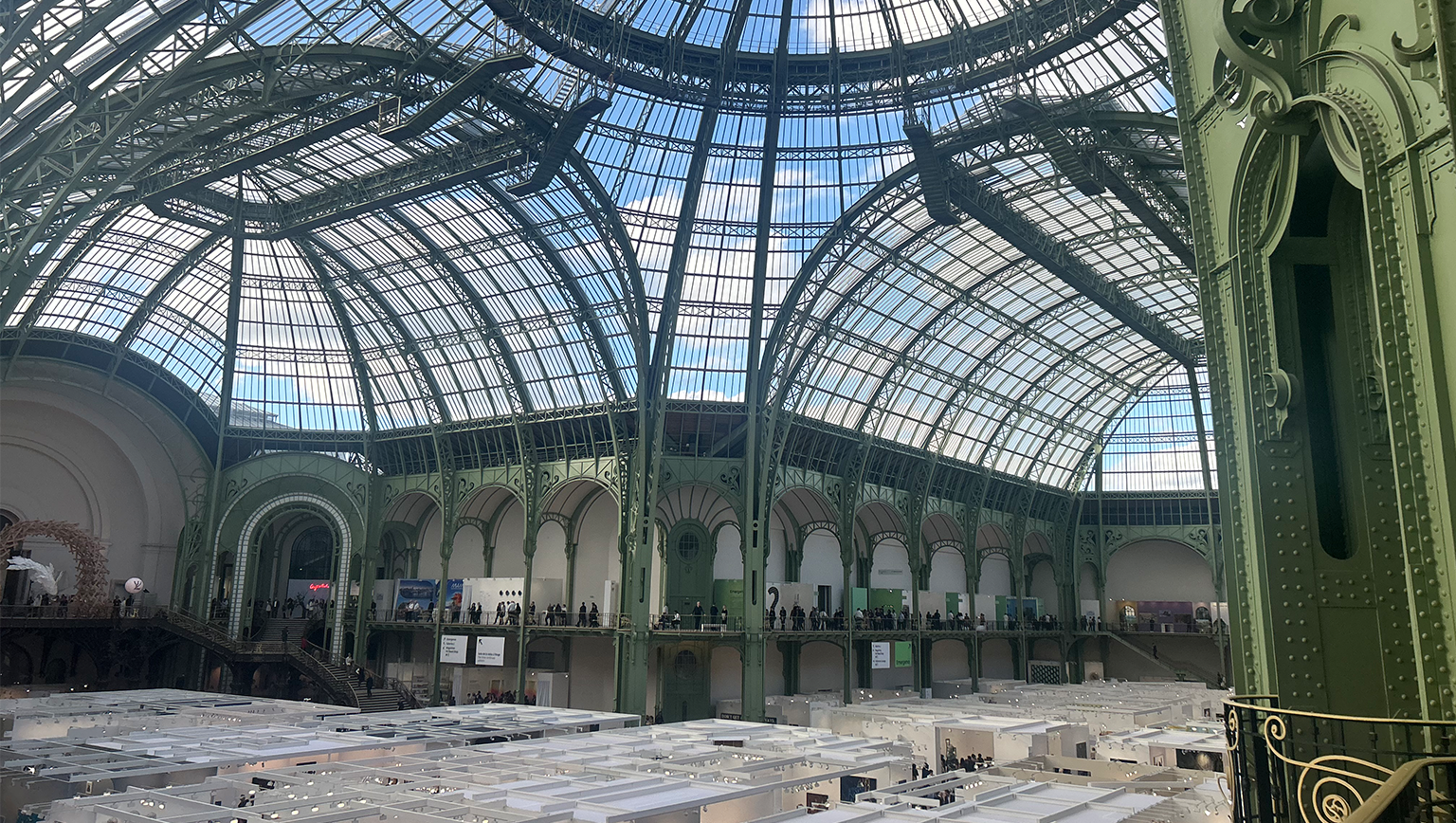
Art Basel Paris Guide: Can’t Miss Booths and a new James Turrell!
Abigail MacFadden • October 17, 2024 •
5min read

